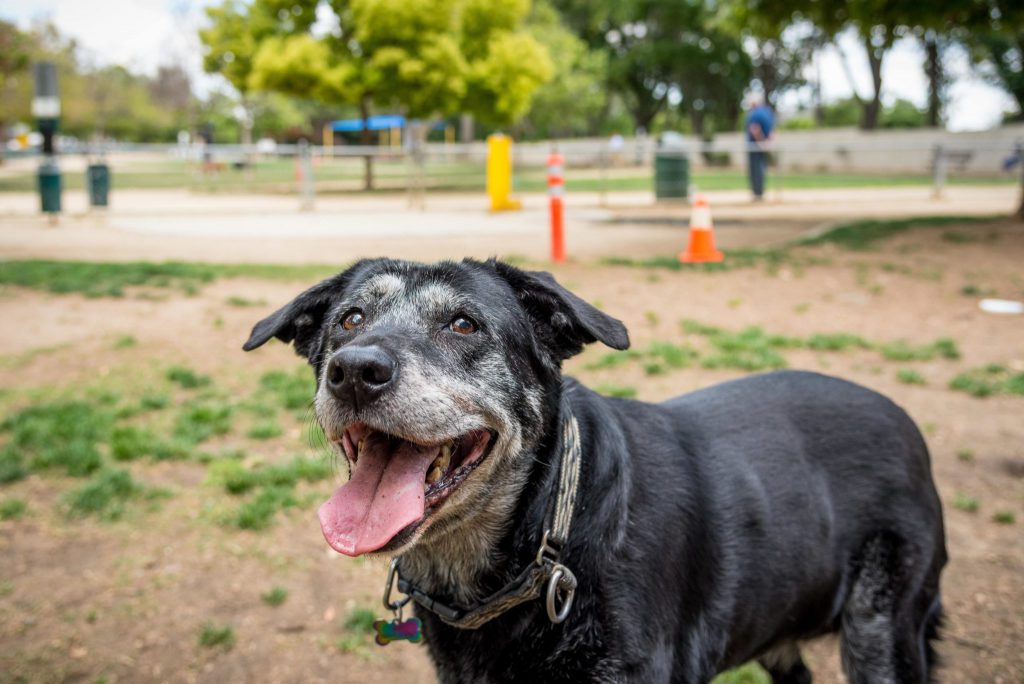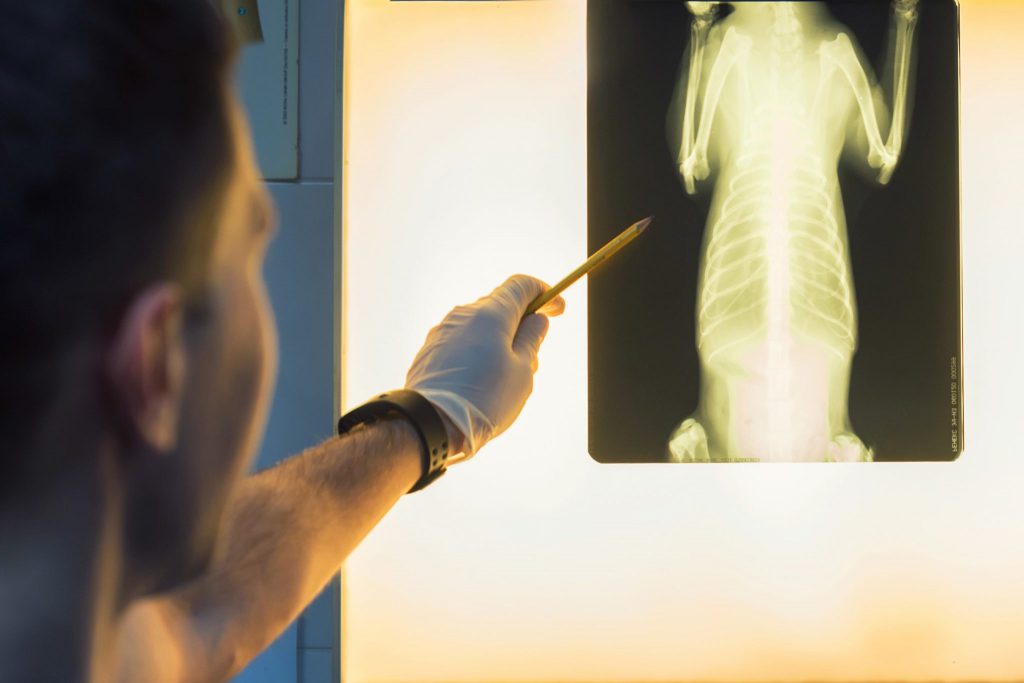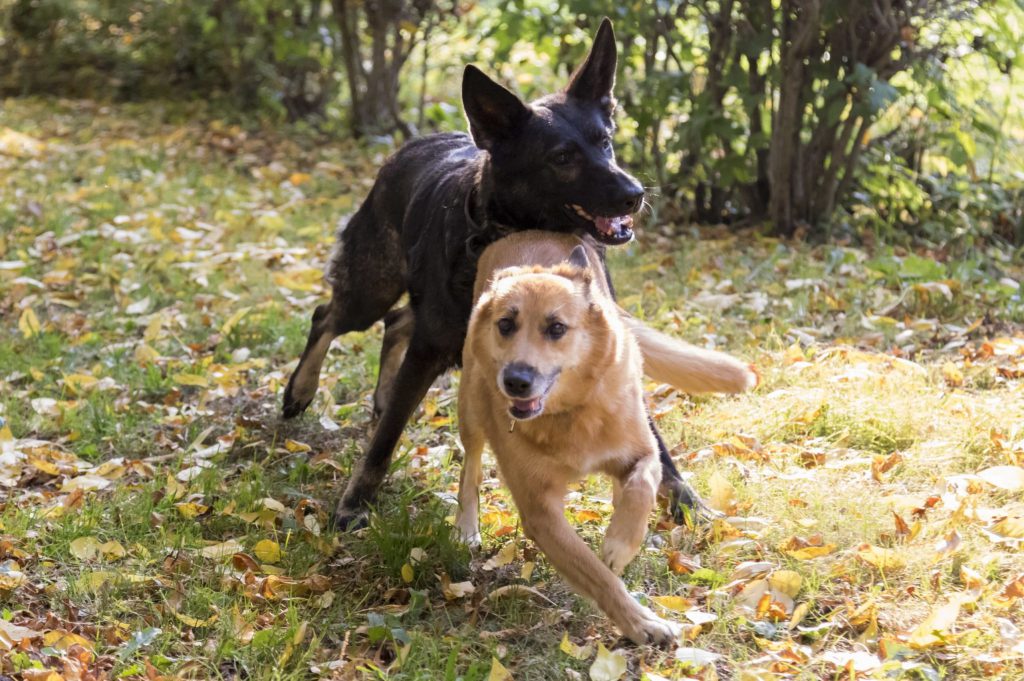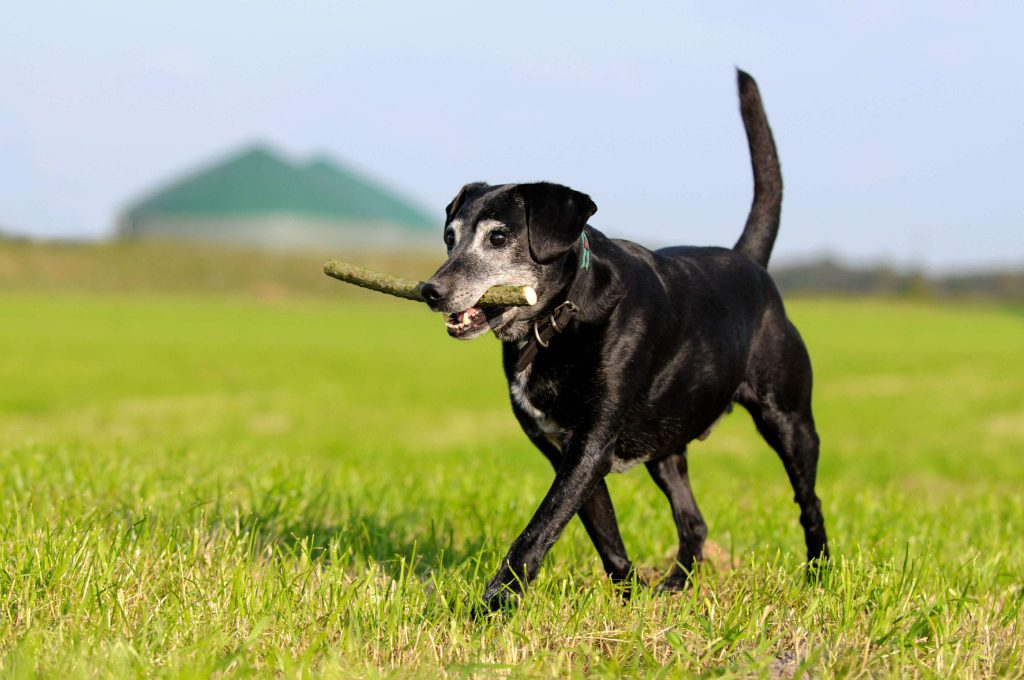Inulin is a type of fiber that is found naturally in plant roots. It is one of the most common ingredients in prebiotics used in veterinary medicine

Inulin is an important component in supplements as it helps to increase the likelihood of dogs absorbing all of the supplement, such as in the Vet Naturals Immune and Allergy Chews. Inulin is an ingredient in many of the highest-quality pet foods that have specific standards to promote gastrointestinal and overall health.

1. Inulin encourages growth and improved activity of beneficial organisms
This includes the normal bacteria and fungi that should be living in a healthy gastrointestinal tract

2. Inulin helps digestion to promote nutrient absorption
This will ensure your dog is actually getting every nutrient within the food

3. It is very helpful for dogs who have difficulty absorbing fat
This will decrease gastrointestinal upset including diarrhea in those pets

4. It has shown to help with many diseases including IBD
IBD (inflammatory bowel disease) is one of the most common gastrointestinal diseases in dogs.

5. Inulin has antioxidant properties
The natural properties may prevent or delay damage to cells

Resources:
- Hall, Edward, and Alexander German. “Diseases of the Small Intestine.” Textbook of Veterinary Internal Medicine, Elsevier, 2017.
- Shang, H et.al. In vitro and in vivo antioxidant activities of inulin. Public Library of Science. Jan 2018; 13 (2): e0192273.
- Simpson, Kenneth W, and Albert E Jergens. “Pitfalls and Progress in the Diagnosis and Management of Canine Inflammatory Bowel Disease.” Veterinary Clinics of North America: Small Animal Practice, vol. 41, no. 2, 2011, pp. 381–398.
- Wortinger, A. “What do Prebiotics and Probiotics Really Do? Southwest Veterinary Symposium. Veterinary Information Network, 2018.
You can buy our vet prescribed supplements here:
Methylsulfonylmethane (MSM) is a naturally occurring compound and popular dietary supplement used both for people and animals. As we age, the amount of MSM the body produces decreases, therefore supplementation is useful. MSM has many helpful properties with improvement of pain and inflammation being the most significant. The supplement is well tolerated and has been shown to be safe in dogs.

- Anti-inflammatory
-
- Acts as an anti-inflammatory by regulating proteins in the body that control inflammation and the way our immune system responds
- Treats or prevents arthritis and is commonly together in a joint supplement with glucosamine and chondroitin
- Also has shown to help with inflammation of the large intestine, lungs and liver

- Helps with joint and muscle pain
-
- Decreases the breakdown of the natural cartilage needed to keep joints healthy
- Reduces muscle soreness associated with exercise
- Improves range of motion and helps repair the connective tissue surrounding muscles
- Relieves pain associated with common orthopedic conditions in dogs such as arthritis, hip and elbow dysplasia, as well as other joint problems

- Anti-oxidant
-
- The natural molecules help to eliminate free radicals (molecules that can damage cells, proteins and DNA)
- Antioxidants work by initiating reactions that do not allow these free radicals to damage cells
- The natural properties may prevent or delay some types of cell damage that lead to many disease processes

- Immune system support
-
- Has been used together with other medications to treat a serious autoimmune kidney disease which can cause kidney failure (Protein-Losing Nephropathy)
- Autoimmune diseases that cause swelling of joints has been treated with MSM (Immune Mediated Polyarthritis and Shar Pei Fever)

- Helps maintain healthy hair coat and skin
-
- Has been shown to be helpful to manage allergic skin disease which is very common in dogs

- New area of research shows that MSM may have an anti-cancer effect

You can buy our vet prescribed supplements here:
Veterinary Naturals Hemp & Hips ‘Senior Large Breed’
[/et_pb_text][et_pb_image src="https://vetnaturals.com/wp-content/uploads/2017/04/amazon-btn-150.png" url="https://www.amazon.com/Veterinary-Naturals-Hemp-Joint-Supplement/dp/B075NNTZK7/ref=sr_1_4?ie=UTF8&qid=1541287240&sr=8-4&keywords=Veterinary+Naturals" url_new_window="on" _builder_version="3.19.1" animation_style="slide" animation_direction="left" animation_duration="500ms" animation_intensity_slide="10%" saved_tabs="all"][/et_pb_image][/et_pb_column][/et_pb_row][et_pb_row _builder_version="3.19.1"][et_pb_column type="4_4" _builder_version="3.0.47" parallax="off" parallax_method="on"][et_pb_text _builder_version="3.19.1"]
Resources:
- Acierno, Mark. “Protein-Losing Nephropathy”. Pacific Veterinary Conference. Veterinary Information Network, 2017.
- Bartges, Joe. “When More is Needed: Nutraceuticals”. Pacific Veterinary Conference. Veterinary Information Network, 2015.
- Brunker, Jill. Protein-Losing Nephropathy. Emergency Medicine Compendium. vol. 27, no. 9. Sept 2005.
- Butawan, Matthew, et al. “Methylsulfonylmethane: Applications and Safety of a Novel Dietary Supplement”. Nutrients. vol. 9, no. 3. Mar 2017 (290).
- Dodds, Jeans. “Alternative Therapies for Pain Management”. Veterinary Medicine Club Symposium, Veterinary Information Network, 2013.
- Mackin, Andrew. “Immune-Mediated Polyarthritis”. Pacific Veterinary Conference. Veterinary Information Network, 2016.
- Wright, Bonnie. “Natural Drugs for Your Pain Management Toolbox”. International Veterinary Emergency and Critical Care Symposium. Veterinary Information Network, 2017.
Vitamin E is a term for a group of compounds that are one of the four fat-soluble vitamins. Fat-soluble vitamins naturally dissolve in the body’s fat. Vitamin E has been shown to have many benefits and have no significant side effects when administered in doses that are not excessive.

Reduction of inflammation:
- Vitamin E has been suggested to reduce inflammation of joints, which results from both the common and auto-immune form of arthritis
- By reducing inflammation, vitamin E can also be used to reduce pain
- For dogs with arthritis, a joint supplement containing vitamin E in conjunction with glucosamine and chondroitin is highly recommended
- Vitamin E can also be helpful for vasculitis, an inflammatory process in blood vessels. This often affects the ear tips, eyes and skin, or can affect the whole body secondary to other diseases, such as auto-immune or kidney diseases

Effect on other diseases
- Vitamin E is thought to have many beneficial health effects on other diseases of the liver, skin and eyes
- Auto-immune diseases such as Lupus and skin disorders
- Dogs with diseases of the pancreas, stomach or intestines may have a deficiency in vitamin E and require supplementation
- Large breed dogs, particularly Boxers, commonly get a heart disease called Dilated Cardiomyopathy. Many of these dogs have low vitamin E levels and supplementation may be helpful
- Eye diseases of the retina, the back portion of the eye which is important in processing vision has been linked to vitamin E deficiency in dogs

Vitamin E is an antioxidant
- Antioxidants help prevent damage to cells by eliminating free radicals (molecules that can damage cells, proteins and DNA)
- May be beneficial for cancers and auto-immune diseases
- Helps slow down the process of aging

You can buy our vet prescribed supplements here:
Glucosamine and Hemp Oil for Dogs - 'Senior Large Breed' Dog Arthritis Supplement - Soft Chew Senior Dog Vitamins [/et_pb_text][et_pb_image src="https://vetnaturals.com/wp-content/uploads/2017/04/amazon-btn-150.png" url="https://www.amazon.com/Veterinary-Naturals-Hemp-Joint-Supplement/dp/B075NNTZK7" url_new_window="on" _builder_version="3.12.2" /][/et_pb_column][/et_pb_row][et_pb_row custom_padding="55px|0px|27px|0px|false|false" _builder_version="3.12.2"][et_pb_column type="4_4"][et_pb_text _builder_version="3.12.2"]
Resources:
- Kirk, Claudia. “Top Neutraceuticals in Pet Foods and Practice”. World Small Animal Veterinary Association World Congress Proceedings. Veterinary Information Network. 2011.
- Rhouma, M., et al. (2013). Anti-inflammatory response of dietary vitamin E and its effects on pain and joint structures during early stages of surgically induced osteoarthritis in dogs. Canadian Journal of Veterinary Research-Revue Canadienne De Recherche Veterinaire 77(3): 191-8.
- Silver, Robert. “Clinically Relevant Neutraceuticals Every Veterinarian Should Know”. Wild West Veterinary Conference. Veterinary Information Network, 2015.
- Vandeweerd, J. M., et al. (2013). Nutraceuticals for Canine Liver Disease: Assessing the Evidence. Veterinary Clinics of North America-Small Animal Practice 43(5): 1171.
- “Vitamin E/Selenium.” Plumb's Veterinary Drug Handbook, by Donald C. Plumb, 9th ed., PharmaVet Inc., 2018.
Dogs are living longer because of better veterinary care, however dogs are considered senior earlier than you might think. For most dogs, senior is considered greater than eight years old. Giant breed dogs, such as Great Danes or Saint Bernards, are considered senior over the age of five. Although it is great to have the extra time with our dogs, unfortunately this comes with a new set of age-related conditions.

The goals of a veterinarian are to keep dogs happy and healthy as long as possible. Here are seven ways to help your senior dog have a better quality of life for as long as possible.
1. Monitoring for signs of disease:
Once our pet is considered senior, ideal veterinary care will change from the visits we had when our dogs were young. It is recommended that older dogs have a veterinary visit semi-annually, or possibly more frequently if they have any health conditions. The exam may be more in depth, and appropriate testing may include bloodwork or x-rays as a tool to screen for disease or if your pet is having any abnormal signs. These tests and a physical exam by your veterinarian check for signs of diseases that are more common in our older dogs.

Sadly we can see disease in pets of any age, but senior dogs are more likely to develop the same health issues we see in older people including:
- Heart disease
- Arthritis or other diseases of the bones and joints
- Kidney failure
- Dental disease
- Cancer
- Endocrine (hormone diseases) such as Diabetes, Cushing’s Disease and hypothyroidism
- Liver disease
- Mental health changes

Although these signs can occur in dogs of a variety of ages, there are a few common signs of disease that senior dogs should be monitored for. If any of these signs are seen, a visit with your veterinarian is recommended. The following is a list of critical changes to monitor your pet for.
- Decreased appetite, weight or muscle loss
- Weight gain
- Coughing, difficulty breathing and inability to exercise may be due to heart or respiratory disease
- Vomiting, diarrhea, and constipation
- Change in smell of breath
- Increased thirst and urination can be seen with kidney, bladder and liver diseases, some cancers and endocrine conditions
- Limping, difficulty sitting, standing or walking
Many senior pets will sadly suffer from cancer and although there is not one specific sign to monitor for, there are some signs of cancer in dogs.
- Visible lumps or bumps
- Swelling in the abdomen
- Drastic drop in weight
- Trouble breathing
- Bleeding from body openings, such as mouth or nose
2. Changes in behavior:
Monitoring pets for behavioral changes is critical because as we see these changes, abnormal medical signs may start to occur. Changes in behavior are a good indicator that your pet may have a disease.

Below are the following possible behavioral changes we should closely monitor our older dogs for.
- Increase in anxiety
- Accidents in the house
- Confusion and disorientation
- Increase in barking, howling, or growling
- Less interaction with owners or other pets
- Change in sleep pattern
- Wandering, circling, getting stuck in corners
- Reaction to sounds the dog was previously accustomed to
- Irritability
- Loss of memory or training from early life
Many senior dogs will suffer from Canine Cognitive Dysfunction, which is similar to Alzheimer’s disease or dementia in people. Although there is no specific treatment to reverse the changes that occur in the brain during this process, there are some things that can be done to decrease the severity of the symptoms such as increasing exercise and mental stimulation. Attempting to teach your dog new tricks may also be helpful. Your veterinarian may recommend medicine and supplements, such as omega fatty acids that can help slow down the progression of the disease.
3. Identification and Management of Pain:
One of the biggest fears owners have for themselves, loved ones and their pets is to ensure they are not in pain. Pain can be expressed in each dog differently and many dogs are very tough and will not show signs of pain.

Below are some of the signs of pain.
- Panting
- Inability to rest or sleep
- Decreased appetite
- Limping
- Trembling
- Changes in demeanor
A variety of diseases and conditions can cause pain, and there are many options for pain relief that can be discussed with your veterinarian. One or multiple prescription medications may be prescribed. The use of supplements such as omega fatty acids and glucosamine can provide pain relief. Other options include acupuncture, massage and physical therapy.

4. Supplements:
The use of supplements, particularly those containing glucosamine, chondroitin and omega fatty acids will benefit senior pets. Both can help significantly with arthritis, which is very common in older dogs. They have very rare side effects, mostly tummy upset that improves after a few doses and these supplements have been proven to be safe and effective. Many older pets will have changes in their activity level and avoid playing, jumping, running and other activities they previously enjoyed. The use of these supplements both as a preventative and treatment can help your pet have a healthy activity level.

Glucosamine and chondroitin have been shown to help with both the degenerative and autoimmune form of arthritis, and provide pain relief. Fatty acids have also shown to be beneficial for a variety of other diseases. These include kidney failure, abnormal rhythms of the heart (arrhythmias), heart failure, inflammatory bowel disease and some cancers.
5. Household changes:
Some simple household changes may also be beneficial to older pets. Especially due to arthritis or neurologic conditions, your dog can have a tough time around the house and a few changes may be very helpful.
- Providing your senior dog with extra soft bedding, such as an orthopedic dog bed will increase comfort level
- Using raised food and water bowls makes eating and drinking easier to not have to strain the neck or back
- Some pets may need stairs or ramps to get in and out of the car or on furniture
- Your pet may have more difficulty on uncarpeted floors, such as hardwood or marble. Placing extra carpeting or a mat in areas your dog may slip, such as near food bowls, can be helpful
- If your pet has a hard time getting up and down the stairs, you may want to place a gate so they do not injure themselves
- Use extra caution when bathing and use a mat so they do not slip

Other than the above changes, keeping everything similar to how your pet was raised is also ideal as your pet ages. Hearing and vision will diminish overtime, so moving or adding new pieces of furniture can affect your pet. Keeping bedding and food bowls in the same place will make life easier as these senses change. Moving homes can be difficult for older dogs and it can take them some time to become accustomed to their new household. And don’t forget to provide your aging dog with extra love and attention!
6. Weight:
Weight changes can have a significant effect on a dog of any age, but particularly senior dogs. Keeping your dog at an ideal weight will provide your pet with a good quality of life. It is not important to focus on the number of pounds, but how your pet looks and feels. When you pet your dog on the side of the chest, you should be able to feel the bony ribs, but should not be able to see them from across the room. When you look at your dog from above, they should have a tiny inward tuck of their waist. If your dog does not have this appearance, your dog is considered overweight or obese.

Excess weight or obesity increases the risk of many diseases, as it does in humans. Arthritis is one of the most common diseases affected by excess weight. However, respiratory issues, heart disease, high blood pressure and skin diseases also commonly occur. Despite feeding and exercising your dog properly, some dogs will gain weight due to an undiagnosed disease being present, most commonly hormonal diseases affecting the thyroid (hypothyroidism) or adrenal glands (Cushing’s disease). If your dog is gaining weight for no apparent reason, it is recommended to have them evaluated by a veterinarian and bloodwork will likely be recommended. An excess of treats can also result in weight gain and does not provide the appropriate nutrients..
Weight loss is also important to monitor. Some senior pets may become picky eaters as they age, and will need a diet change for them to maintain a healthy weight. However, weight loss in senior pets is often due to an underlying disease. As we all age, some muscle loss is to be expected, but drastic, rapid muscle loss is also a sign of illness.
Weighing your pet at home or by bringing large dogs to a veterinary hospital is the best way to monitor weight. When we see our dogs daily, it is difficult to judge ourselves.
7. Nutrition:
Nutrition is key to helping your senior dog maintain a healthy weight. As your dog ages, so does their ability to taste and smell food, which can affect their appetite. Many dogs will become picky eaters, and a diet change may be helpful. Many dogs prefer canned food or moisture added to dry food as they age, as chewing may be more difficult for them. If your pet is healthy and at an ideal weight an adult maintenance or a senior diet is suitable and should contain the following:
- Protein 15-25%
- Fats: 7-15%
- Fiber: 2-10%
- Obese dogs and those with a sensitive stomach should have a diet that is more on the high end of the fiber content
- Fat: 7-15%

Many health conditions require a specific diet. These diseases are not often cured by diet but slow down the progression of the disease. The following diseases are just a few examples that can be helped by dietary changes.
- Heart disease: these diets should be low in sodium, and have specific amounts of fatty acids, antioxidants and taurine
- Kidney disease: lower protein diets that have controlled amounts of phosphorous and sodium are recommended
- Cancer: these diets should be higher in fat, protein, omega fatty acids and lower in carbohydrates

Many people feed their dogs a home cooked diet. If a home cooked diet is being used, it is important that the appropriate amounts of supplements are added, as a dog should not eat only human food. A lack of appropriate canine nutrients can have detrimental effects on any dog, particularly those who are senior. There are many reasons why home cooked diets that are not supplemented appropriately can be unsafe. One example is taurine, an amino acid that when lacking leads to pets developing heart disease. There are supplement kits that can be added to home cooked diets.
A proper diet should be developed by working with your veterinarian to choose appropriate foods for your senior dog. If a home cooked diet is being used, you veterinarian can make sure your dog is getting adequate essential nutrients to maintain good health.
Resources:
- Bartges, Joe. “Feeding Geriatric Patients: What is the Best Nutritional Approach?”. American College of Veterinary Internal Medicine Conference. Veterinary Information Network, 2014.
- Bauer JE. Responses of dogs to dietary omega-3 fatty acids. Journal of the American Veterinary Medical Association. 2007;231:1657–1661
- Burns, Kara. “Cognitive Dysfunction/Brain Aging: What’s New in Nutritional Management?”. American College of Veterinary Internal Medicine Conference. Veterinary Information Network, 2018.
- Cline, Jill. “Nutrition, Geriatrics, and Behavior”. Topics in Companion Animal Medicine. vol 26, issue 1, Feb 2011.
- Epstein, Mark, et al. “AAHA Senior Care Guidelines for Dogs and Cats”. Journal of the American Animal Hospital Association. 2005; 41, 81-91.
- Ettinger, Stephen J., and Edward C. Feldman. Textbook of Veterinary Internal Medicine: Diseases of the Dog and the Cat. Elsevier Saunders, 2010.
- Freeman, Lisa. Cachexia and sarcopenia: emerging syndromes of importance in dogs and cats. Journal of Veterinary Internal Medicine. 2012;26(1):3–17
- Freeman, Lisa. “Optimal Nutrition for Senior Pets” World Small Animal Veterinary Association World Conference Proceedings. Veterinary Information Network, 2013.
- “Guidelines for a Lifetime of Health Care and Nutrition, Helpful Measurements”. Iams Company Proceedings. Veterinary Information Network. 2003.
- Laflamme DP. Nutritional care for aging cats and dogs. Veterinary Clinics of North America” Small Animal Practice.. 2012;42:769–791, vii
- Ograin, Vicky. “The Golden Years - Dogs and Cats Aging Gracefully”. Fortieth Annual Ontario Association of Veterinary Technician Conference. Veterinary Information Network, 2019.
- Parry, Nicola. “AVMA 2017: Behavioral Problems in Senior Dogs.” American Veterinarian, American Veterinary Medical Association, 2017
- “Senior Pet Care (FAQ).” American Veterinary Medical Association, www.avma.org/public/PetCare/Pages/Caring-for-an-Older-Pet-FAQs.aspx.
- Vandeweerd JM, Coisnon C, Clegg P, et al. Systematic review of efficacy of nutraceuticals to alleviate clinical signs of osteoarthritis. J Vet Intern Med 2012; 26: 448–456.
- Ward, Ernie. “Pet Weight Check.” Association for Pet Obesity Prevention, 2017, petobesityprevention.org/pet-weight-check/
Turmeric is derived from a plant, Curcuma longa, which is in the same family as ginger and cardamom. Turmeric is thought to have many beneficial health effects. The use of turmeric and other nutraceuticals (food derived supplements) is gaining popularity in veterinary medicine and turmeric has been studied extensively to increase understanding of its potential benefits. The use of turmeric has been shown to be safe, with no reports of significant side effects.

1. Its main effect is proposed to be reduction of inflammation
-
- Recommended in dogs who suffer from arthritis (inflammation of the joints), in conjunction with taking a joint supplement containing glucosamine and chondroitin
- Proposed to help with both the common form of arthritis as well as the auto-immune form, known as IMPA (immune-mediated polyarthritis in dogs)
- By reducing inflammation, pain is also relieved

2. Turmeric can be used for dogs suffering from cancer
- May provide protection to the healthy tissue that can be damaged from the side effects of anticancer agents
- May lead to cell death of the cancer cells that we want to be eliminated

3. It may help with many other diseases, which can affect the following organs.
- Liver
- Gallbladder
- Pancreas
- Stomach and intestines
- Kidney
- Respiratory
- Immune deficiencies
- Wound healing and post- surgical inflammation

4. Turmeric has antioxidant properties.
- Antioxidants work by initiating reactions that do not allow these free radicals to damage cells
- The natural molecules help to eliminate free radicals (molecules that can damage cells, proteins and DNA)
- The natural properties may prevent or delay some types of cell damage

5. In addition to the other diseases mentioned, there is growing evidence that turmeric can help with skin conditions.
- Turmeric may have antimicrobial properties, which help manage the normal bacteria we all have on our skin naturally to decrease the likelihood of skin infections
- Hair loss, itchiness, and atopic dermatitis (inflammation of skin caused by allergies) are very common in dogs and have been shown to be improved with the use of turmeric

You can buy our vet prescribed supplements here:
Hemp & Hips:
[/et_pb_text][et_pb_image src="https://vetnaturals.com/wp-content/uploads/2017/04/amazon-btn-150.png" url="https://www.amazon.com/dp/B06ZYSPJF6" url_new_window="on" _builder_version="3.0.74" animation_style="slide" animation_direction="left" animation_duration="500ms" animation_intensity_slide="10%" saved_tabs="all"][/et_pb_image][et_pb_text _builder_version="3.12.2"]
Resources
- Fougere, B. “Thai Culinary Herbs and How They Can Help Companion Animals”. Small Animal Veterinary Association World Congress Proceedings. Veterinary Information Network 2015.
- Kneuven, Douglas. “Botanical Medicine: Mother Nature’s Drugs”. Wild West Veterinary Conference. Veterinary Information Network 2017.
- Labban L. Medicinal and pharmacological properties of turmeric (Curcuma longa): a review. Int J Pharm Biomed Sci. 2014;5(1):17–23.
- Levine, Corri B., et al. “Cellular Effects of a Turmeric Root and Rosemary Leaf Extract on Canine Neoplastic Cell Lines.” BMC Veterinary Research, vol. 13, no. 1, Dec. 2017, pp. 1243–1264.
- Liou, Stephanie. “About Free Radical Damage”. Stanford University , 11 Oct. 2015, web.stanford.edu/group/hopes/cgi-bin/hopes_test/about-free-radical-damage/.
- Meizarini, Asti, et al. “Anti-Inflammatory Properties of a Wound Dressing Combination of Zinc Oxide and Turmeric Extract.” Veterinary World, vol. 11, no. 1, 2018, pp. 25–29.
- Silver, Robert J. “Western Herbs for Veterinary Musculoskeletal Disorders.” Australian Veterinary Association Proceedings. Veterinary Information Network, 2012.
- Vaughn, Alexandra R., et al. “Effects of Turmeric (Curcuma Longa) on Skin Health: A Systematic Review of the Clinical Evidence.” Phytotherapy Research, vol. 30, no. 8, 23 Aug. 2016, pp. 1243–1264.
Wynn SG, Fougere B. Veterinary Herbal Medicine. St Louis, MO: Mosby Elsevier; 2007:652, 653, 654, 655.




































